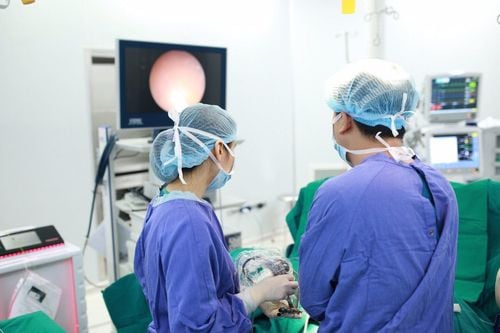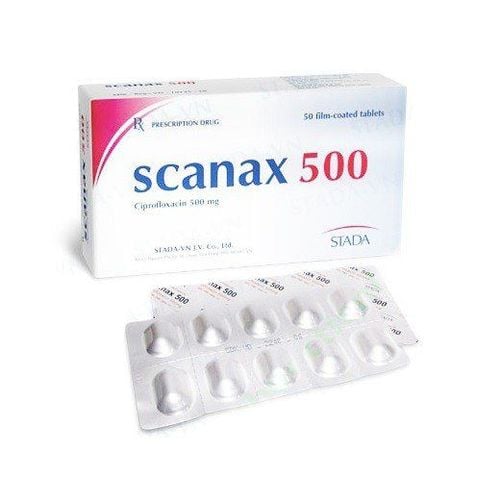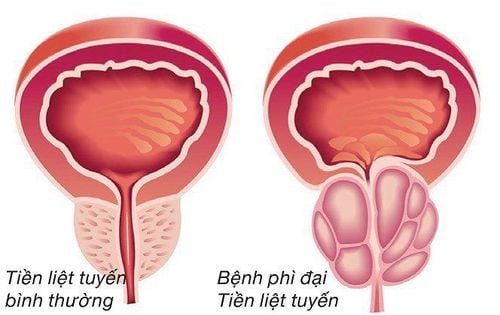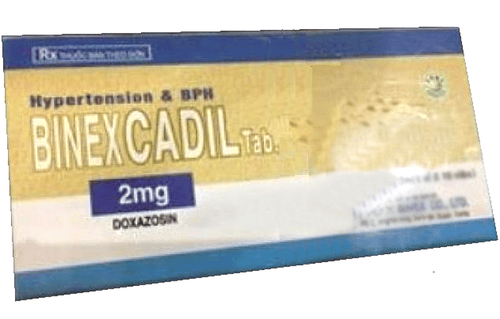This is an automatically translated article.
The article was professionally consulted by Doctor of Urology Department, Vinmec Central Park International General Hospital.Currently, the transurethral endoscopic method to cut prostate enlargement is popular in the world due to its many advantages compared with open surgery such as: no incision, limited blood volume loss, no pain and therefore the patient recovers health more quickly.
1. Endoscopic resection of benign prostatic hypertrophy
Surgical treatment is still the optimal solution, completely solving the cause. Previously, people had to open surgery, remove the tumor. This method often causes a lot of blood loss, the patient has to stay in the hospital for a long time. Currently, endoscopic transurethral surgery to remove prostate enlargement is widely applied in the world.
Laparoscopic resection of benign prostatic hypertrophy is a method of removing prostate tumors by means of a transurethral endoscopic cutter. This surgery is performed under either spinal anesthesia or general anesthesia. The surgeon inserts a laparoscope into the prostate gland through the urethra to cut the lobes of the prostate into small pieces for suction out of the body. Then, the cut area is stopped bleeding with an electric knife.
This method is considered the "gold standard" in the treatment of benign prostatic hypertrophy with advantages such as: less pain, quick recovery, short hospital stay, aesthetics due to no incision, Minimize intra- and postoperative complications. The surgery has little blood loss and no pain, so the patient recovers quickly. However, it should be noted that about 5% of patients experience urinary incontinence after surgery.
2. Indications for laparoscopic surgery to remove prostatic hypertrophy
Prostate enlargement causing obstruction or when the disease has caused complications, including the following cases:
Absolute indication: Prostate enlargement causes the following complications
Recurrent urinary retention Urinary tract infection Recurrent urinary retention Recurrent hematuria Retrograde renal failure Bladder stones, bladder diverticulum
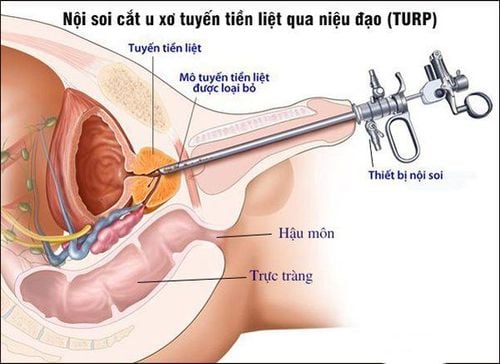
Phương pháp nội soi cắt u phì đại lành tính tiền liệt tuyến qua đường niệu đạo
Relative indication:
Prostate enlargement causing moderate or severe symptoms and failure to medical treatment Urinogram: Maximum urinary flow rate < 12 ml/s (Qmax < 12 ml/s) It should be noted: prostate size may not be related to symptom severity and is therefore not a determining factor in the treatment of an enlarged prostate.
3. Contraindications for laparoscopic surgery to remove prostate enlargement Absolute contraindications
Urethral stricture due to failure to insert the endoscope Acute prostatitis, urinary tract infection Stiffness of the hip joint (not able to lie down in the obstetric position) Unstable coagulopathy Severe medical illness or progressing (cardiovascular, respiratory disease...) Relative contraindications
People with mental disorders Renal failure .
4. Things to note after laparoscopic surgery
During the first few days after surgery, the patient has a continuous bladder lavage through a urinary catheter (urethrocyte bladder catheter). The urethral catheter is usually removed after 3 days. Patients will be discharged from the hospital when they are able to urinate after the catheter is removed, the urine is clear or there is negligible blood in the urine. The patient re-examined with the treating doctor after 1 month. During this time you need to drink a lot of water, an average of 2 to 3 liters of water daily to flush the bladder.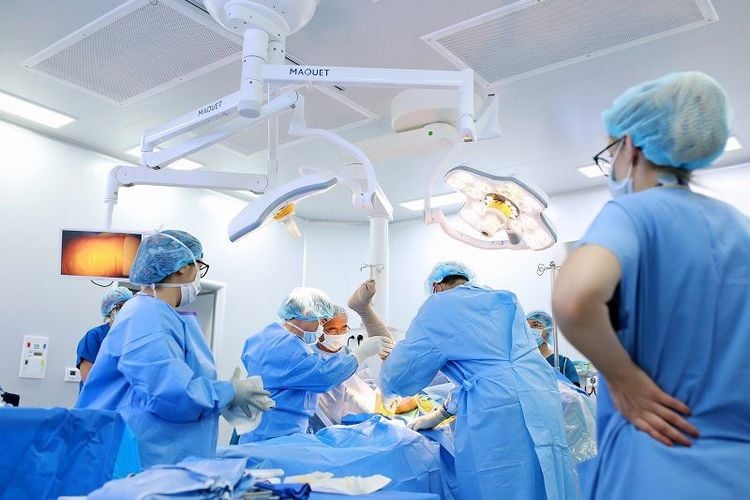
Bệnh viện Đa khoa Quốc tế Vinmec - địa chỉ phẫu thuật nội soi cắt tuyến tiền liệt phì đại lành tính uy tín
In the first few weeks after surgery, the patient may experience symptoms such as: urgent urination, painful urination, frequent urination... for a long time, because this is the healing time. During this time, the patient should not have sex and limit riding a bicycle or motorbike. Do not drink a lot of alcohol and spicy foods. If you have bright red hematuria, blood clots or urinary retention, you need to go to the hospital immediately to have a urinary catheter and bladder pump.
Laparoscopic surgery to remove benign prostatic hypertrophy is one of the treatment methods applied at Vinmec International General Hospital. The advantages of laparoscopic surgery at Vinmec include:
Experienced doctors, proficient in each step of surgery Modern equipment: imaging system, Karl storz endoscopic system, laser machine large capacity Good level of anesthesia, anesthesia and analgesia after surgery.
Please dial HOTLINE for more information or register for an appointment HERE. Download MyVinmec app to make appointments faster and to manage your bookings easily.




